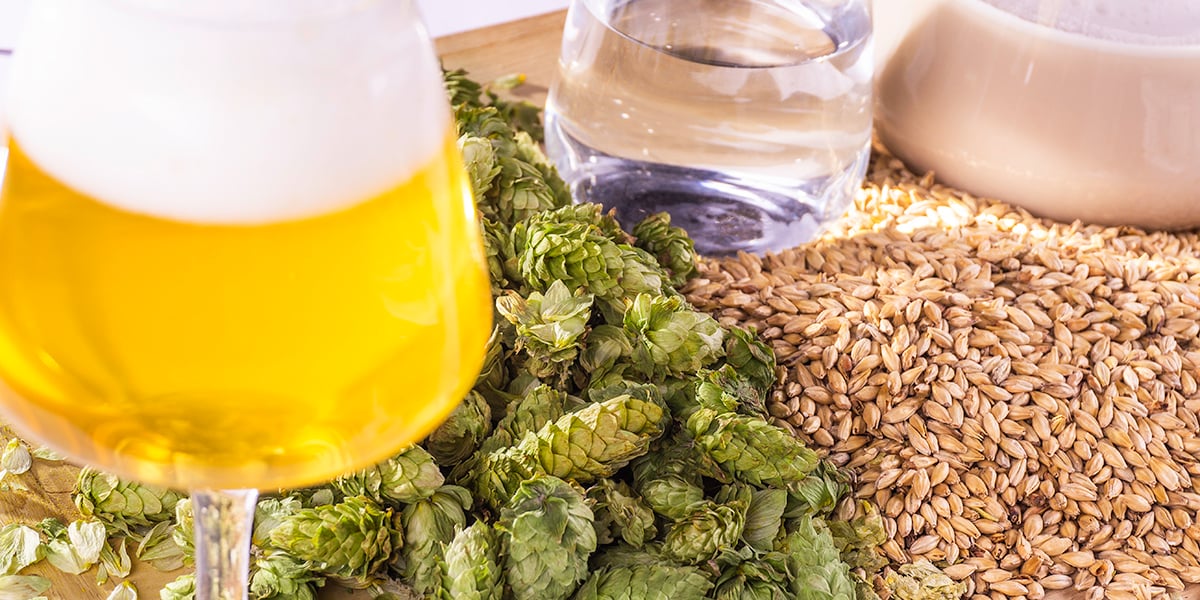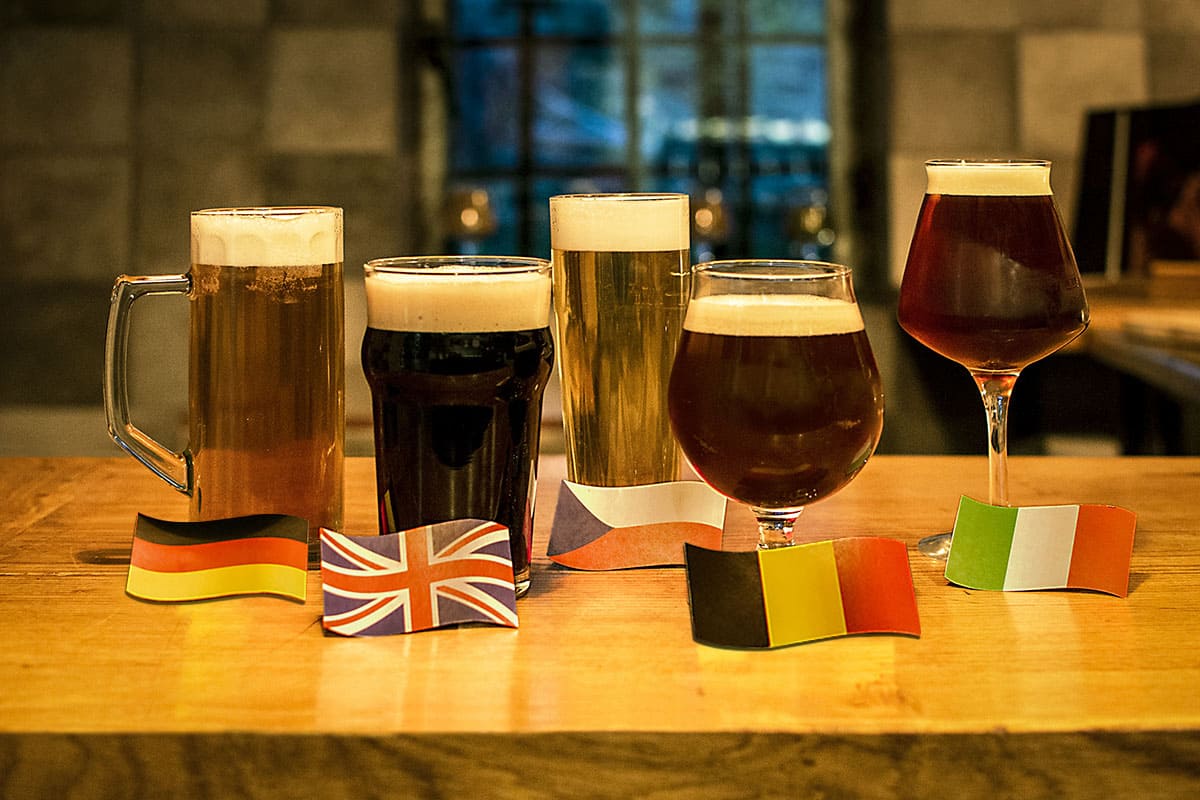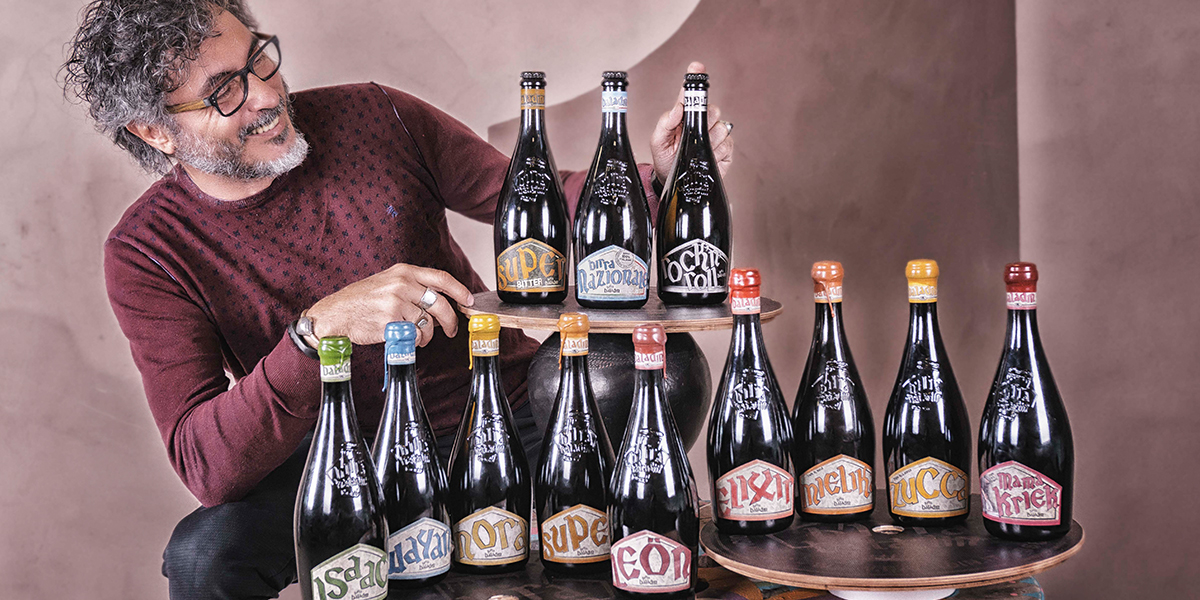What are the Ingredients of Beer?

Beer is a fantastic drink. Of course, there are some rules to stick to, but it also leaves the brewer free to experiment and build a recipe with virtually any ingredient. Generally speaking, beer has four basic ingredients that it must contain, as required by the Italian law.
But, of course, it can be enriched with further additions. Here are the components of the fluid that we like so much and that we pour in a beer glass.SUBSCRIBE TO OUR NEWSLETTER
Barley malt
Malt is the product obtained from the process of malting a cereal, i.e. the process that first activates the germination of the grains and then stops their transformation through drying. In most cases, barley malt is used. According to the Italian law, it must account for at least 60% of the total fermentable base (it can be replaced with wheat malt). Depending on the drying temperature, the malt can have different colors and specific organoleptic characteristics: we can have light, caramel, roasted malts, etc. In general, it is the color of the malt which determines the final color of the beer. Recipes rarely use only one type of malt. It is much more common to use a mix of different malts.
Hops
Common hop is a vine of the Cannabaceae family and has been used for time immemorial in the production of beer. In beer-making, the flowers of female plants are used (cone shaped fruits), usually in the form of pellets. These are added while boiling the wort or at a later stage. Dozens of different varieties exist in the world, and can be subdivided into bittering and aromatic hops. The first are essentially responsible for the bitterness of beer, while the latter enrich the aromatic profile with citrusy, resinous, herbaceous, spicy or fruity notes, depending on the type of hops chosen. Hops is also a natural preservative: thanks to its properties, it acts as antioxidant and antiseptic agent. As is the case for malt, a recipe usually involves the use of several different hops.
Yeast
Yeast comes into play at the most important stage of brewing: fermentation. It breaks down the sugars in the wort, turning them into alcohol and carbon dioxide. Based on the yeast used, beers can be classified into two large families:
- Top-fermented beers (also called ales), obtained from Saccharomyces cerevisiae.
- Bottom-fermented beers (also called ales), obtained from Saccharomyces pastorianus (previously called carlsbergensis).
Within these two families, different strains of yeast are used. Some are considered neutral, because they virtually give no contribution to the aroma of the beer. Others, instead, help to create the aromatic profile thanks to esters, phenols and other components which produce fruity and spicy notes.
Water
Even if it is often overlooked, water plays a fundamental role as an ingredient of beer and accounts for the majority of the mix (80% to 90%). Its composition can therefore deeply affect the end result and make the difference between a successful and an unpleasant beer. The chemical composition of water not only changes the taste of beer, but it also influences the reactions between the other ingredients. This is the reason why breweries change its chemical profile according to their needs, using reverse osmosis equipment. The history of beer-making features cities and regions that have become famous for their water (and the related beer styles), such as Plzen in the Czech Republic or Burton-on-Trent in England.
Other ingredients
As mentioned before, master brewers have the chance to enrich their recipes with other ingredients. It is quite common to use other cereals in addition to barley malt, such as oats, rye or rice, or ancient locally produced grains. The use of spices is a time-honored tradition. The most widely used are coriander, cocoa beans, cinnamon, pepper, coffee, vanilla and many more. The addition of fruit is extremely old: most importantly citrus fruit (bitter orange zest is typical in Belgian Blanche beers), as well as others, including exotic fruits. Some beer styles are characterized by the addition of specific, sometimes unusual ingredients. Some examples are Sweet Stouts (lactose), Gose (salt and coriander), Italian Grape Ales (grape must) or Oyster Stouts (oysters).
By definition, beer has a double soul: on the one hand, it requires the presence of some indispensable ingredients, on the other it gives the chance to move away from reference models, adding one’s favorite ingredients. And this is one of the most exciting things about it!





